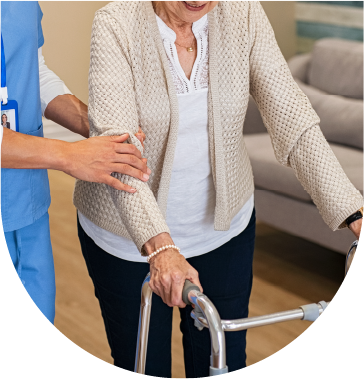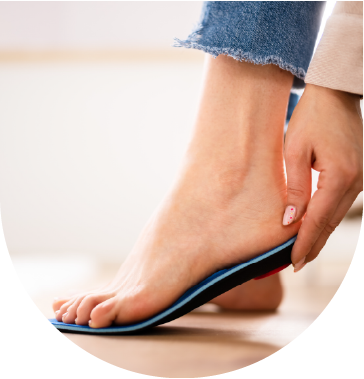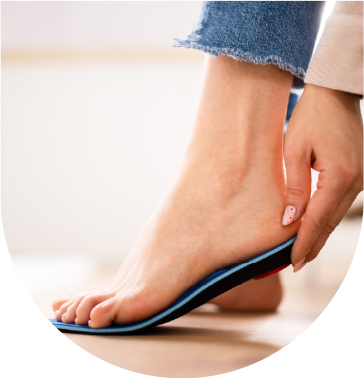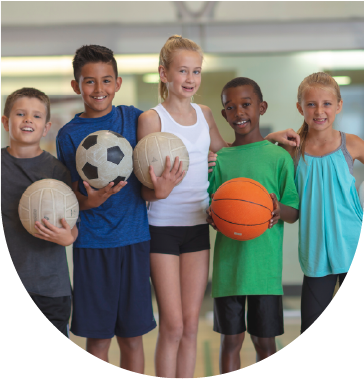Elderly Fall Risk

Patient
ABOUT THE practitioner
Dr. Christopher Proulx
Director of Education at Baliston Health
Massachusetts, USA
D.C., Ph.D.(abd), C.S.C.S
Private practice and consultant as a physical medicine and rehabilitation specialist and performance coordinator for individuals and athletic teams.
Holds a Doctor of Chiropractic, PhD(abd) in Exercise Science, Master’s of Science in Exercise Science, and a Bachelor’s of Science in Sport Management and Health Fitness.
Over 25 years of experience in sport and clinical sciences.
Authored and co-authored several peer reviewed publications and has presented his work across the U.S., Central and South America, China, and Europe in many different venues.
Consultant to several manufacturers, clinicians, athletes, and coaches at all levels.
Licensed chiropractor, certified strength and conditioning specialist and former certified athletic trainer (15 years).
PATIENT PROFILE and Reason for Analysis
An 83-year old woman, living independently in a senior community, has a history of falls that have led to serious injuries, including fractures and a concussion.
She experiences chronic neck pain, muscle weakness, and balance difficulties.
Her medical history includes arthritis in both knees, poor posture, and a range of other conditions that require multiple medications.
Overview
Falls are one of the leading causes of injury among the elderly. In this case, we explore how smart gait analysis technology can identify fall risks and guide rehabilitation strategies to improve safety and quality of life.
Evaluation Approach
Alongside standard orthopedic and neurological assessments, we used Baliston Health’s smart footwear to perform a walking (gait) analysis. The subject walked at her natural pace on a flat surface, while our sensor-embedded insoles collected detailed data on her movement.
Key Gait Analysis Insights
Alongside standard orthopedic and neurological assessments, we used Baliston Health’s MovScan to perform a walking (gait) analysis. The subject walked at her natural pace on a flat surface, while our sensor-embedded insoles collected detailed data on her movement.
- Slowed Movement & Asymmetry
Her walking speed and cadence were below average, and she spent more time on one foot than the other—signs commonly linked to fall risk in older adults.

- Stride Abnormalities
The patient had shorter steps and longer stance times, indicating hesitation and instability, potentially due to a fear of falling

- Extended Foot-Flat Phase
The Gait Line shows prolonged time spent during the foot-flat portion of the stance, suggesting instability and cautious gait.

- Altered Foot Patterns
She showed signs of foot overpronation (inward roll) and supination (outward roll) on the right side, especially during push-off.

- Excessive Out-Toeing & Reduced Propulsion
the Foot Progression Angle showed excessive outward foot rotation (abduction) on the right side and reduced toe-off propulsion on both sides, limiting walking efficiency and indicating weakness or fear of falling..


Clinical Interpretation
These findings clearly suggest a high risk of falling. Slower walking speed and asymmetric movement are strong indicators of reduced mobility and can correlate with increased risk of injury and even mortality in elderly patients. The changes in stride and foot posture not only affect stability but may also contribute to worsening her knee osteoarthritis.
Clinical Interpretation
A tailored intervention program can significantly reduce the patient’s fall risk, focusing on:
- Strength Training: For both upper and lower limbs to improve control and reduce fatigue.
- Balance Exercises: To boost proprioception (body awareness) and confidence during movement.
- Gait Re-education: Focused on improving stride symmetry, step length, and foot alignment.
- Home-Based Monitoring: Continued use of gait analysis at home for progress tracking and personalized care adjustments.
Baliston Health’s smart gait analysis offers clinicians a powerful tool to detect subtle mobility issues before they lead to serious falls. By translating movement into actionable data, we empower practitioners to deliver personalized, proactive care for the aging population.


